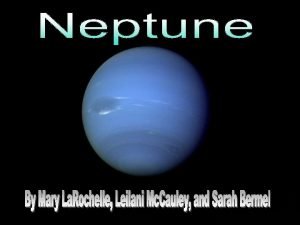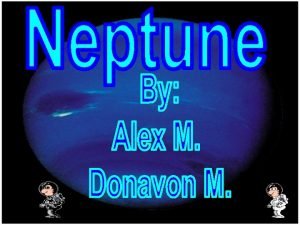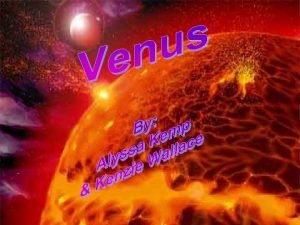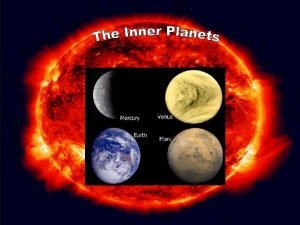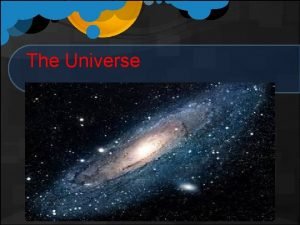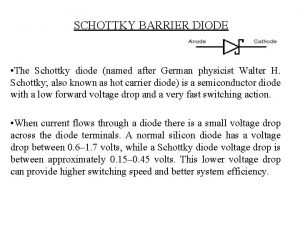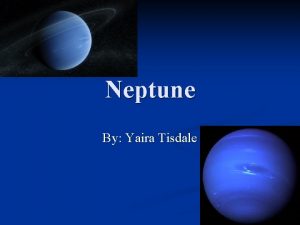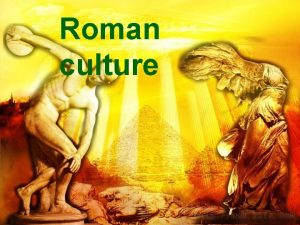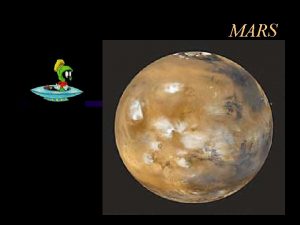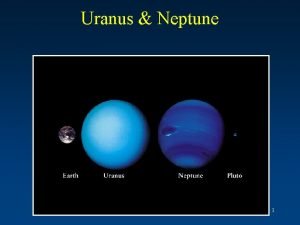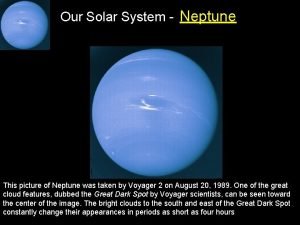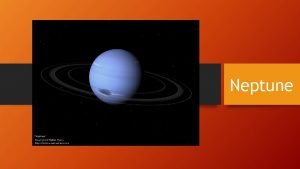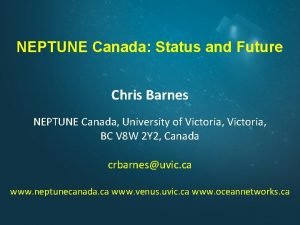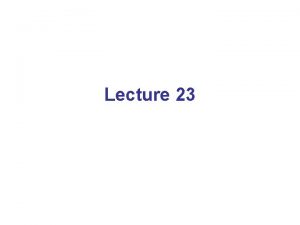Neptune is named after the Roman God of












- Slides: 12


Neptune is named after the Roman God of the Sea. • Neptune was the first planet found by mathematical prediction. • Unexpected changes in the orbit of Uranus led astronomers to deduce that its orbit was subject to a gravitational pull by the planet Neptune. • Galileo first observed Neptune on December 28, 1612, and again on January 27, 1613.

• Life on Neptune would be impossible • There is no oxygen found • Neptune has extreme storms. • The Great Dark Spot is a Giant Anti-Cyclonic Store • Neptune is covered by clouds and is very windy. • Winds can range 20 m/s to 325 m/s • It has the strongest sustained winds of any planet • Neptune is very cold. • It is -200 degrees Celcius • The interior of Neptune is consists of ice and rock


Distance from the Sun Neptune is the 8 th planet from the Sun. From the earth, Neptune is approximately 4. 4 billion kilometers away Neptune is 4, 496 kilometers, or 2, 794 million miles, away from the sun

• The South pole is 10 degrees warmer than the rest of the planet. • Neptune has rings that are made of dust particles • The blue color of Neptune is from Methane gas • Neptune is 17 times the mass of the Earth • Neptune can never be seen by the Naked Eye • Voyager’s closest visit was in August 25, 1989

Composition: More than half of Neptune is Hydrogen 80%, there is 19%of helium, and 1. 5%of methane there is a very Small amount of Hydrogen Deuderide (HD) and Ethane (C 2 H 6)

• Neptune has 13 moons. • The moons are: Triton, Thalassa, Naiad, Despina, Galatea, Larissa, Proteus, Nereid, Halimede, Sao, Laomedeia, Psamathe, and Neso • Triton is the largest Moon Triton

Density: Its density is 1. 639 g/cm denser than Uranus. It is the 3 rd largest planet in mass. Size: This is the forth largest planet. It’s diameter equator is about 30. 775 miles and a little smaller than Uranus , but 4 x as big as Earth. Its mass is 1. 2 x greater than Uranus.

Revolution : It takes 164. 8 days to rotate the sun. Its period of revolution in earth years is 164. 79. What makes this happen is minerals that make up its density.

Rotation: The period of rotation is 17. 7 hours its days of rotation is 0. 67125 days.

